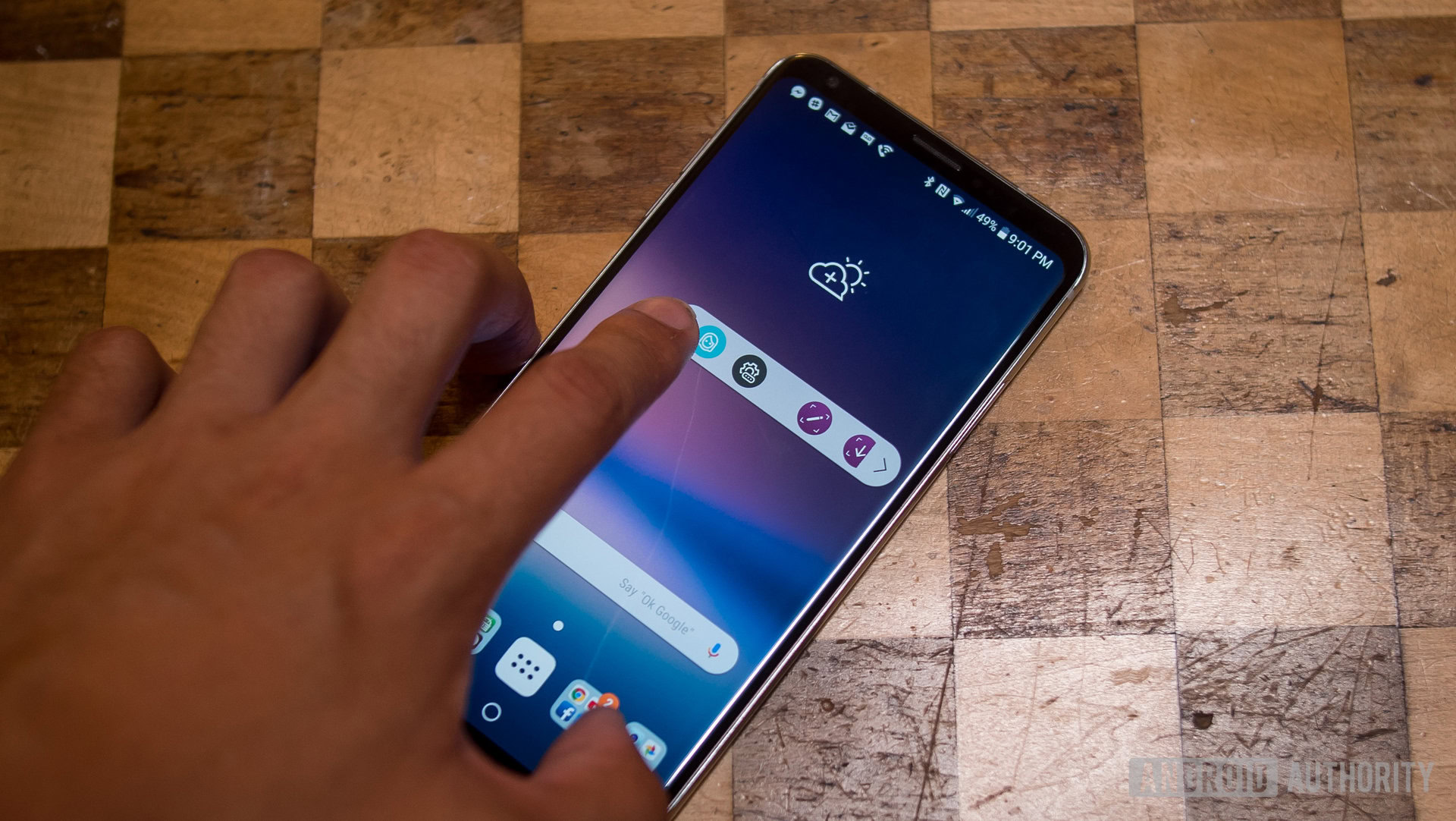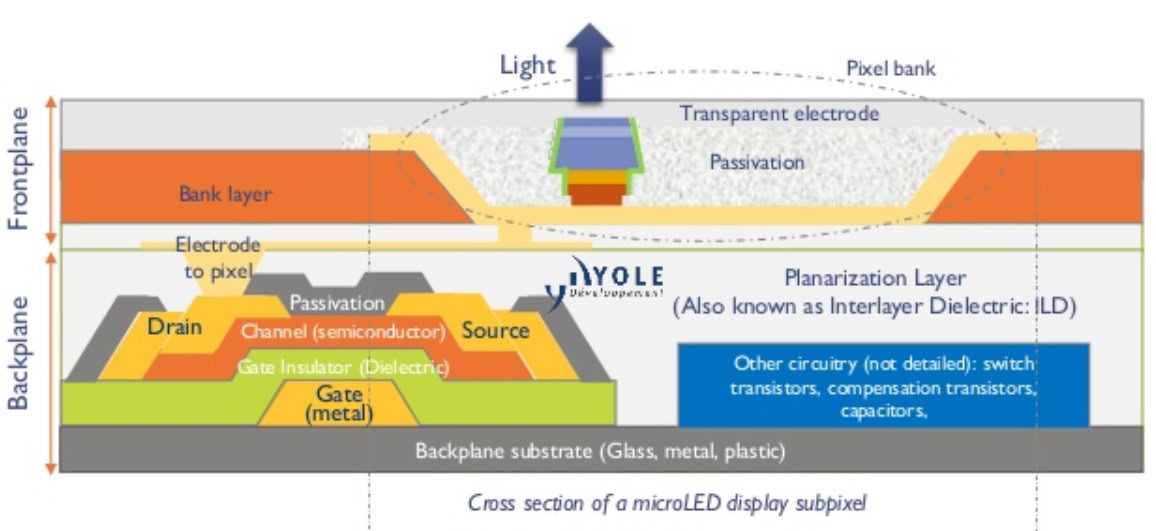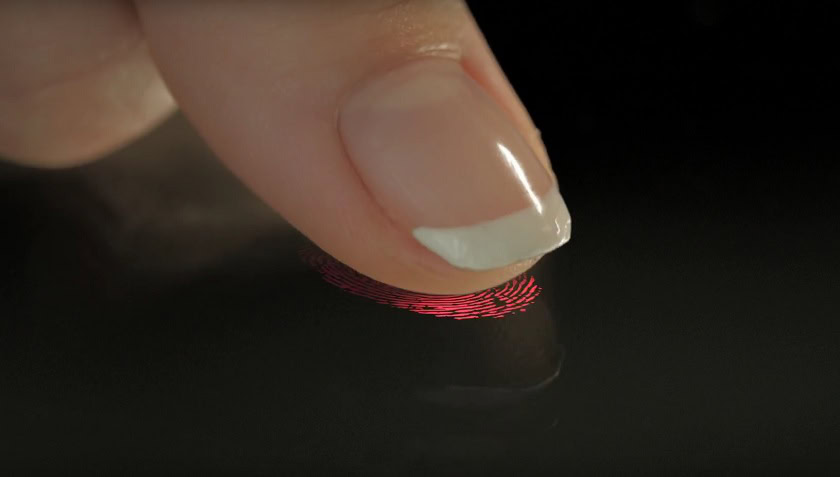Affiliate links on Android Authority may earn us a commission. Learn more.
Micro-LED paves the way for the 'smart display'

There might not be any commercial micro-LED panels in production yet, but already the technology is emerging as the most likely successor to today’s high-end smartphone displays. As well as boasting image quality that’s at least on par with OLED, micro-LED technology also promises lower power consumption, higher peak brightness, and even more pixel-dense panels.
However, there are exciting new prospects on the horizon that fall outside of image quality as well. Micro-LED displays could also usher in the era of the smart display. In other words, displays that have other bits of electronics embedded within them, allowing them to perform tasks in addition to today’s capacitive touch and image display functions.
How would it work?
One of the lesser talked about benefits of micro-LEDs is their very compact size. At sub 100 µm, these LEDs are slimmer than the width of a human hair. When placed in a display panel matrix, these LEDs have more space left in between them than conventional sub-pixels, which can be filled with other bits of circuitry, alongside the TFT plane. Furthermore, micro-LED aperture is said to be just 10 percent, meaning a narrow and efficient exit for the light straight out of the display. This means that placing components next to the LEDs won’t compromise their aperture or brightness.
The smart display isn’t an entirely new idea. Companies, including Apple and Samsung, have been attempting to embed fingerprint scanning capabilities built into current generation OLED displays. Although these efforts haven’t found their way into their latest smartphone releases due to the technical difficulties, most likely related to the limited spare room and production difficulties. Switching to micro-LED would give engineers more space to work with.

That being said, there are some limitations on the types of components that could fit in between these micro-LEDs. Medium or large sized ICs or processing components would certainly be too large to fit. Remember we’re dealing with just micrometers of space in a high resolution panel. Instead, complementary circuitry would be limited to small individual components like transistors, resistors, and other diodes. These can still form complex and useful circuits, but any major processing would still have to be offloaded elsewhere.
The drawback is that etching additional custom electronics into a LED wafer or chip for TFT bonding, the most likely manufacturing technique for the first generation micro-LED panels, would be difficult, costly and rather limited in potential applications. It also might not be economically viable if lots of different companies want different things. Embedded fingerprint scanners might eventually be a universal smartphone feature, but the same couldn’t necessarily be said for facial scanning or temperature sensing applications.
Instead, it could make more sense for micro-LED chip manufacturers to integrate the smart display components alongside LED surface mountable chip parts. Rather than having to etch a circuit into the various display layers, the smart display components can be mounted like a regular integrated circuit with a custom TFT. This would still enable the smart technologies to work over any part of the screen, but has the added benefit of making panel production slightly more modular. However, pick and place production of micro-LED displays is not yet viable, as manufacturing machines lack the required accuracy to place sub-100 µm LEDs.

What could a smart display do?
As we mentioned earlier, in-display fingerprint scanners will quite possibly be the first example we see of a smart display technology. Both Apple and Samsung have been rumored to be working on the idea. In fact, a number of patents related to Apple and its 2014 micro-LED acquisition LuxVue point to a scanner that uses infrared lights and detectors embedded in the display to capture a fingerprint. These extra diodes could certainly be placed in the spare space between micro-LED pixels.
Apple’s new Face ID technology packed into the iPhone X also features infrared scanning technology, which would be very interesting to see integrated directly into the panel that you’re going to be looking at. Although there’s no reports on Apple attempting to embed this into a display, it would certainly be a more discrete solution than the current notch.

With light detectors embedded in the screen there’s also the possibility of introducing new controls and gestures without users having to physically touch the screen. Other ideas floating around include embedded temperature or pollution sensors, which would be able to offer up extra information for apps to make use of. Although perhaps an idea like a heart rate monitor makes more sense, allowing readings to be taken when the user touches the display rather than having to hold a their finger to a dedicated module. Moving your phone’s ambient light sensor into the display could also be a neat decision for manufacturers aiming to slim down bezels as much as possible.
It’s still early days for micro-LED technology, and so these advanced smart display use cases are most likely even further away. However advancements in micro-LED production should eventually allow engineers to pack new sensors and smart technology into smartphone, smartwatch, and other displays. And that’s bound to result in some interesting new use cases for us consumers.